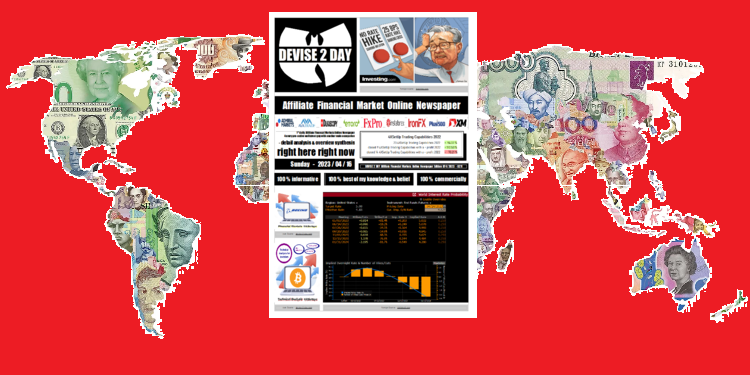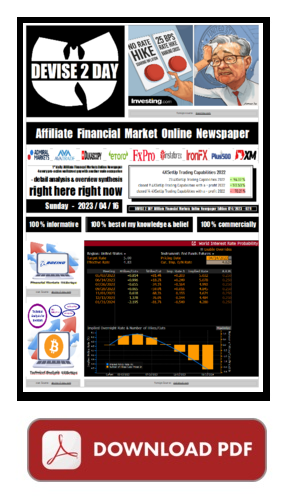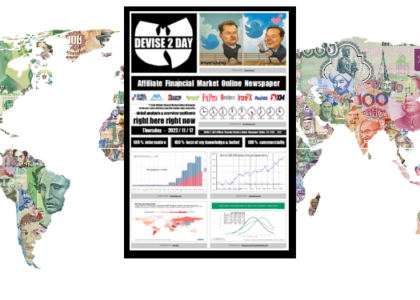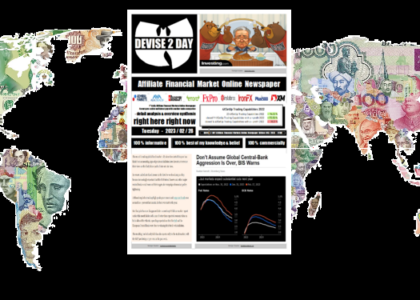
2023/04/16 (211.074) Technical Analysis – NYSE-BA & CME-BTC1!
Last Week Finally Over $30000 Again!
What´s Next For Our Long BTC1! 4XSetUp
In The Medium-Term The Psychological Price Action marks Of $20000 And/Or $30000 Are Crucial For The Long-Term
„What goes up comes down again“, is a wisdom that can also be applied to the historical price action on the BITCOIN future.
And that especially for the period from the December 2020 to the June 2022. When the BITCOIN future rose from $19800 to up to $65520 (April 2021), even $69355 (November 2021). To drop back down to $18760 (June 2022). Interestingly, if you look at the price action of the BITCOIN future in monthly candlesticks, the price action traded in the form of a Gaussian bell, if you will! What is a Gaussian Bell? With a Gaussian distribution, also known as a normal distribution, the data form a bell curve. This means that the values are closer to the means than to the extremes. It is a Gaussian curve. It was named after the mathematician and physicist Carl Friedrich Gauss. So I’m asking myself the question, in terms of BITCOIN price action, “Are we getting back to the mean above 30,000?” And/Or “was that a historical aberration in terms of price action in bitcoin? So a deviation from normal price action, above 30000? From over 20000? From over 10000?“
However, for our long 4XSetUp in the BITCOIN future the monthly lows, above 30000, during the breakout from December 2020 to June 2022 are nonetheless decisive. Because if bullish investors got long above these price levels at the time, they are still making losses today. And should bearish investors then have went short are still have a profit. So that sustained daily price action, of days, weeks, months, above the lows of January 2021, May 2021, June 2021, and July 2021 fundamentally changes the historical technical chart picture back to bullish. But as before, in terms of short-term process action, this is a topic of the future.
Before We Go Into A Detailed Overview Of BITCOIN`s Future Price Action From Today,
Let`s Revisit The Price Action Of The USD Index, The US 10Y Bond Yield, And/Or Even The US WallStreet
The dollar index pared losses and was above 101 on Friday, still remaining close to its lowest level in a year, as investors try to gauge the next Fed monetary policy steps. The latest data showed retail sales in March fell more than expected but previous figures were revised to show a smaller decline. Meanwhile, US consumer sentiment unexpectedly increased and inflation expectations for the year ahead jumped to a 5-month high of 4.6%. Earlier, US producer prices unexpectedly fell month-on-month in March by the most in nearly three years, and inflation data pointed to a moderation in consumer prices. The latest FOMC minutes also indicated that officials considerably scaled back expectations of aggressive rate hikes, as the recent banking crisis would likely tip the economy into recession later this year. Markets are currently pricing in a 25 bp increase from the Fed in May and a series of rate cuts from July to the end of the year.
The yield on the 10-year US Treasury note jumped to over 3.5% on Friday, the highest in two weeks, as investors continued to monitor the latest economic data for insights on the Federal Reserve’s path for the rest of the year. US retail sales contracted more than expected in March, although upward revisions for the prior month softened worries about low consumer activity. At the same time, strong corporate results from US banks downplayed systemic risks from the bank runs in March, giving the Fed more room to increase interest rates. Even though the 10-year yield remains over 20bps higher than the 7-month low touched this month, investors continue to bet that cooler inflation and softer labor market conditions will force the Federal Reserve to cut its funds rate on three occasions this year. Earlier data showed that producer and consumer prices were lower than expected in March, while unemployment claims and non-farm payrolls showed some job market softening.
US main stock market indexes were trading lower on Friday with Dow sliding more than 200 points as a slew of earnings results and new data gave Fed more room to continue with rate hikes. The University of Michigan consumer sentiment unexpectedly increased to 63.5 in April of 2023 with inflation for the year-ahead gouge jumping to a five-month high of 4.6%. Meanwhile, earning results showed that big financial companies are doing well despite of recent banking turmoil. JPMorgan Chase, Wells Fargo, and Citigroup reported better-than-expected earnings and revenue triggering a rally in bank shares. Also, BlackRock assets swelled and deposits at JP Morgan unexpectedly rose as investors moved funds following the collapse of several banks. On the other hand, US retail sales decreased much more than predicted in March mostly due to lower gas prices.
Basically Technical Short-Term Price Action Areas And/Or Zones For This Week
In the short term, price action around 27365 as well as 28740 is crucial. Because within these two price levels, the BITCOIN future is traded within the bearish June ’22 GAP. Which at the time could not be recaptured. But on the contrary. In retrospect, from the perspective of the technical analysis, it was in fact one of the triggers for further selling pressure, until November 2022 lows at $14925. That´s why $25350 on the downside and/or $32140 are the medium-term price action targets to break out. Because an outbreak under $2535, after the price action since November low 2022, I would define as a failed medium-term trend reversal formation. So the bulls – and/or maybe we too (with this current 4XSetUps) – would have to admit defeat sooner or later. Because then an even deeper price action, at least from the point of view of technical analysis, just as I understand and also use it, should be forthcoming. On the other hand, a breakout to the upside – i.e. price action always above $32140 – should confirm the bull market since the November 2022 low in the medium term. Because then, looking back from a long-term perspective, we left a medium-term trend reversal formation, upwards. But that is future music – maybe for May 2023. Because the $25350 on the downside and/or $32140 on the overside are still a small handful of $1000 away. Which is why we should focus on $27365 as well as $28740 in day trading. So that if there is no above-average positive or negative news in the coming days and weeks, there may well be a technical battle of nerves; when it comes to the BITCOIN price action. The calm before the storm, if you will! Back towards 2000? Or is it finally over 30,000 again?
However,
Let`s Take A Short Overview About Released US Economic Data From Friday
US Business Inventories Rise Less Than Forecast
Manufacturers and trade inventories in the US rose by 0.2% from a month earlier in February 2023, following an upwardly revised 0.2% fall in the prior month and slightly below market forecasts of a 0.3% increase. Higher stocks at retailers (0.7% vs flat reading in January) and merchant wholesalers (0.1% vs -0.6%) outweighed reduced inventories at manufacturers (-0.1% vs -0.1%). Year-on-year, business inventories jumped by 9.1% in February.
US Consumer Sentiment Surprises On The Upside
The University of Michigan consumer sentiment for the US unexpectedly increased to 63.5 in April of 2023 from 62 in March, beating forecasts of 62, preliminary estimates showed. A rise was seen in both current conditions (68.6 vs 66.3) and expectations (60.3 vs 59.2). Meanwhile inflation for the year-ahead is seen jumping to a five-month high of 4.6% from 3.6% while the five-year gauge was unchanged at 2.9%. While consumers have noted the easing of inflation among durable goods and cars, they still expect high inflation to persist, at least in the short run.
US Capacity Utilization At 4-Month High
Capacity utilization in the United States increased to a four-month high of 79.8% in March of 2023, from 79.6% in February and beating market forecasts of 79%. The operating rate for utilities jumped 5.6 percentage points to 75.3% while the one for manufacturing moved down 0.5 percentage point to 78.1% and for mining fell 0.5 percentage point to 91.1%. Capacity utilization is now 0.1 percentage point above its long-run average.
US Industrial Output Rises More than Expected
Industrial production in the United States rose 0.4% mom in March 2023, beating market expectations of a 0.2% increase and after an upwardly revised 0.2% gain in February. The index for utilities jumped 8.4%, with advances for both electric and natural gas utilities, as the return to more seasonal weather after a mild February boosted the demand for heating. On the other hand, manufacturing output decreased 0.5%, more than forecasts of a 0.1% decrease. The indexes for durable manufacturing and nondurable manufacturing moved down 0.9% and 0.1% in March, respectively, while the index for other manufacturing (publishing and logging) fell 0.7%. Mining output slipped 0.5%, with declines in the indexes for oil and gas extraction, other mining, and support activities. Capacity utilization moved up to 79.8 percent in March, a rate that is 0.1 percentage point above its long-run (1972–2022) average.US Manufacturing Output Falls More Than Forecast
Manufacturing production in the United States fell 0.5 percent in March 2023, more than market expectations of a 0.1 percent decrease. The indexes for durable manufacturing and nondurable manufacturing moved down 0.9 percent and 0.1 percent in March, respectively, while the index for other manufacturing (publishing and logging) fell 0.7 percent. Most durables industries posted losses; wood products posted the largest drop, of 2.9 percent, followed by nonmetallic mineral products, which fell 2.6 percent.
Anyway, Le Me Record It Again In A Detail Overview,
What This All Means Concret For The Price Action In The BTC1!
According to investment legend Ray Dalio, bitcoin doesn’t have much of a future as a store of value. In an interview with the Julia La Roche Show, Dalio says his view of Bitcoin hasn’t really changed. In his opinion, Bitcoin is still not a reliable store of value or means of payment. Bitcoin is often compared to gold in the financial world due to the natural scarcity that both assets possess. Gold has an annual inflation rate of around 1 to 2 percent, while Bitcoin has an absolute scarcity of 21 million units. “It’s a very, very bad alternative to gold. Central banks own gold, by the way, and this is their third largest reserve. They have US dollars, euros, gold and the yen,” said Ray Dalio. In addition, according to Dalio, Bitcoin is too volatile to function as a means of payment. After all, according to the analyst, one cannot build an economy on a currency whose value can fluctuate sharply on a daily basis. In this respect, according to Dalio, bitcoin is not effective as a currency. In his opinion, there is no way to raise the level of future price development.
So all in all, we can safely say that Ray Dalio is not a big bitcoin enthusiast. Neither do I…
good morning, good day, and/or good night
at whatever time, wherever you are !
right here right now :


















